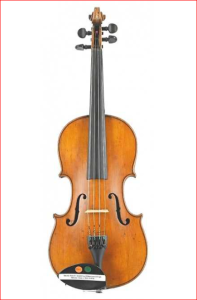The Legacy of Andrea Amati: The Father of the Modern Violin
Introduction
The world of stringed instruments owes a great debt to the Amati family, particularly to Andrea Amati, who is widely regarded as the “inventor” of the modern violin. The Amati dynasty of luthiers, based in Cremona, Italy, dominated the violin-making scene for over a century, making significant contributions to the development of the instrument.
Early Life and Musical Renaissance

Andrea Amati was born around 1505 in Cremona, Italy. While his exact lineage remains uncertain, it is believed that he was not from the patrician family that shared the Amati name. Despite this, Amati quickly established his workshop and gained recognition for his exceptional skill in crafting stringed instruments. During the Renaissance, Italy experienced a rapid evolution in musical culture, with a growing demand for high-quality instruments. Amati’s focus on making stringed instruments, particularly violins, allowed him to cater to the affluent upper class and religious institutions investing in artistic representation.
Innovations in Violin Design
Amati’s violins represented a significant departure from the earlier viola-da-braccio models of the late medieval period. He introduced several groundbreaking modifications that transformed the violin’s design and sound. One of Amati’s key innovations was elevating the position of the bridge and moving it closer to the fingerboard. This adjustment reduced the resonant length of the strings, resulting in a distinct and improved tonal quality. He also made changes to the sound holes, relocating them lower on the body and altering their shape. Additionally, Amati implemented construction principles he learned from lute making, creating an inner substructure that allowed for thinner walls and improved resonance.
The Amati Brothers: Antonio and Girolamo
Following Andrea Amati’s death in 1577, his two sons, Antonio and Girolamo Amati, carried on their father’s legacy. The brothers refined and optimized the Amati violin model, making significant improvements in various aspects of instrument construction. They perfected the purfling, harmonized the silhouette, and increased the edge fluting, which enhanced both the aesthetics and acoustic properties of their violins. One of their most influential contributions was establishing a smaller size for the viola, a standard that would later be adopted by renowned luthier Antonio Stradivari.
Nicolò Amati: Continuing the Legacy
Nicolò Amati, the son of Girolamo Amati, faced significant challenges after the unexpected death of his father. Operating the last superior violin-making atelier in Italy, Nicolò found himself in a period of crisis marked by famine and plague. Despite these difficulties, he reoriented himself and made crucial advancements in violin making. Nicolò further refined the Amati model, reinterpreting and lowering the table while deepening the edge fluting. These modifications, coupled with higher ribs, resulted in a new sound that met the performance demands of the time. Nicolò’s workshop also served as a training ground for future luminaries of the Cremonese school, such as Francesco Ruggeri, Andrea Guarneri, and Antonio Stradivari.
The Great Amati Model
Nicolò Amati’s re-interpretation of the Amati violin model served as the foundation for the enduring success of his workshop. By rethinking the design and tension of the instrument, Nicolò created a violin that resonated with the musical standards of the time, particularly for larger ensembles and orchestras. His work as a teacher further solidified his influence on subsequent generations of luthiers. While Nicolò’s innovations brought prosperity to his workshop, they also sparked intense competition in Cremona, which ultimately overshadowed the Amati family’s prominence in the 17th century.
The Lasting Legacy
The Amati family’s contributions to violin making cannot be overstated. Andrea Amati’s pioneering work in developing the modern violin set the stage for future innovations. His sons, Antonio and Girolamo, refined and perfected the Amati model, while Nicolò continued the tradition and expanded upon it. The influence of the Amati family can be seen in the work of subsequent generations of luthiers, including the legendary Antonio Stradivari. Today, Amati violins are revered for their craftsmanship and exceptional sound, a testament to the enduring legacy of this remarkable family of luthiers.
Conclusion
Andrea Amati and his family’s contributions to the world of violin making have left an indelible mark on the history of music. Their innovations and craftsmanship set the stage for future generations of luthiers, shaping the sound and design of the modern violin. The Amati legacy continues to inspire and captivate musicians and collectors alike, ensuring that their instruments remain treasured masterpieces for centuries to come.
